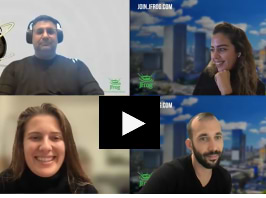DevSecOps: Low Hanging Fruit @ DevOps Sydney Meetup
September 16, 2021
< 1 min read
DevSecOps: Low Hanging Fruit
These days Software Development is reliant on multiple dependencies (ie… Kubernetes, Operating System Layer, Java App etc..) Building one logical point for all dependency vulnerability scanning is something you can easily institute.
In this lightning talk we will:
• Show you a tool you can freely access to create a single point for dependency scanning before you build your proof of concept.
• show you how to access free vulnerability scanning access using X-Ray for fast, easy, and accurate results






